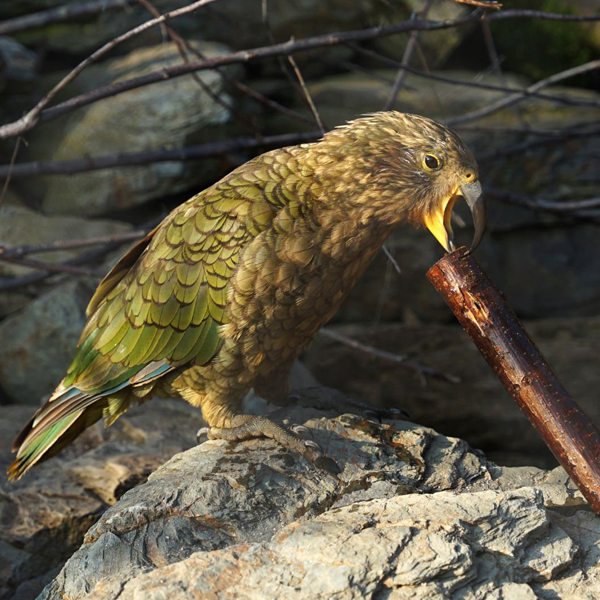Specific types of play behavior noted in the wild are object manipulation, balancing games, locomotory play, acoustic play and social play. Social play, in which two or more birds or species interact, often involves scenarios such as “chase me”, “I want what you are playing with” and “let’s pretend to fight”. Play fighting usually involves “beak fencing”, pushing with feet or nipping at the feet and feathers of their play partner. For older birds, mock fighting helps to keep them fit and ready to fend off predators.
Do birds play because they are intelligent or are they intelligent because they play? Millicent Ficken, stated in her paper on avian play, “the answer is probably both”. Because they are intelligent, they are capable of diverse and complex play activities, and it is also probable that through play they learn relationships with the environment that contribute to their plasticity of behavior and great ecological success in many different habitats.”
Through play, a young parrot learns to experiment with and expand his physical limits, how to interact with his environment and his flock mates. In young birds, playtime is part of the learning process in which birds start to identify textures, colors, shapes, and it also helps to develop coordination and dexterity. Exposure to a wide variety of objects at a young age helps to create a more confident, less fearful bird.
Often, we hear of older birds whose owners insist that they "don't play with toys". Many of these birds were raised without opportunities to explore a varied environment and many of these birds also exhibit negative behavioral traits (feather plucking, screaming, biting, etc.)
Is it possible to teach an older bird to play? You bet. The key is not to give up if your bird doesn't play with the first few toys you've bought for him. There are many types of toys that fulfill a wide range of needs. Just like we humans have different hobbies and play preferences, our birds also have varied interests, personalities and play styles. Once you find something that grabs your bird's attention then they may be interested in expanding their horizons.

